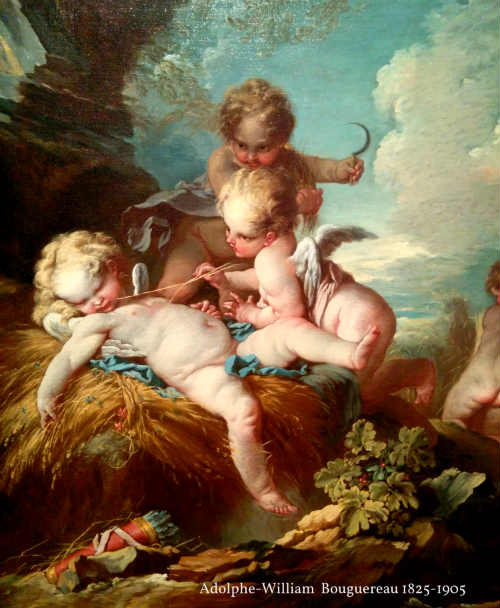Search:: Artists Alphabetically Artists by Country Artists by Century Artists by Movement
Academic Classicism
1885-1920
"The only was for us to become great and possibly inimitable is to imitate the ancients." -- Johann Joachim Winckelmann, the great German scholar and art historian, from his treatise, Thoughts on the Imitation of Greek Works , published 1755
Description of the Academic Classicism Painting style
Academic Classicism is the painting style established by European art academies and universities. In general It is also called "academic art". In this context as new styles are embraced by academics, the new styles come to be considered academic, thus what was at one time a rebellion against academic art becomes academic art. The academic art world also worshiped Raphael, for the splendor of his work. This style is often termed "art pompier", "academism", "academicism", "classical revival", "beaux-arts classicism" and "eclecticism".
The followers of Classicism appreciated and imitated Greek and Roman literature, art, and architecture. Classicism is a late form of Neoclassicism, with a distinctly original elegance. Often linked with "historicism" and "syncretism".
Followers of this movement were influenced by the high standards of the French Académie des Beaux-Arts, which practiced under the movements of Neoclassicism and Romanticism. Academic Classicism attempted to merge both techniques to create the perfect style. It is characterized by adhering to a strict manner of painting, following narrow compositional rules and delicacy of color. The atmospheric effects are sumptuously luminescent. According to art historian, Walter Pater "To produce such effects at all requires all the resources of painting, with its power of indirect expression, of subordinate but significant detail, its atmosphere, its foregrounds and backgrounds."
Subject matter often used in Rococo art such as light hearted frivolity of the upper classes was fashionable once again. This style favored interpretations of Greek, Roman and Renaissance themes. Imagery often centered around Biblical stories, Arthurian legends and mythology. According to Solomon Gessner, the great German painter and art historian, "By studying the works of Greek sculptors the painter can attain the sublimest conceptions of beauty, and learn what must be added to nature in order to give to the imitation dignity and propriety.
Johann Wolfgang von Goethe: German poet, playwright, novelist, and philosopher argued that Greek art was an absolutely exemplary model from which a fixed canon determinative for the artists of all times could be derived; and that the composition of pictures should correspond strictly with the style of antiquity.
Masters of Academic Classicism, William Bouguereau, Paul Delaroche and Jean-Leon Gerome, had an extraordinary way of capturing nature's tempestuous, "feral" qualities and yet, at the same time, create in the viewer an almost inspirational feeling of harmony and serenity. High drama, blithe sophistication, and unrequited passion characterize this magnificent painting style.

Example of a Academic Classicism painting by Adolphe William Bouguereau
Important Painters of Academic Classicism Movement
Ivan Konstantinovich Aivazovsky, 1817-1900
Adolphe-William Bouguereau1825-1905
Charles Emile August Carolus-Duran, 1837-1917
Leon Francois Comerre, 1850-1916
Pierre-Auguste Cot 1837-1883
Thomas Couture, 1815-1879
Paul Delaroche 1797-1856
Eugene Fromentin, 1820-1876
Jean Leon Gerome, 1824-1904
Jean-Paul Laurens1838-1921
Adolphe Alexandre Lesrel, 1839-1929
Luc Olivier Merson, 1846-1920
Hans Makart, 1840 - 1884
Giulio Rosati, 1858-1917
Franz Xavier Winterhalter, 1805-1873
William Clarke Wontner, 1857-1930
Fritz Zuber-Buhler, 1822-1896
© HistoryofPainters.com 2017
This text is Copyright © historyofpainters.com. Do not use without permission. If you like this page and wish to share it, you are welcome to link to it, with our thanks.
If you feel you have worthwhile information you would like to contribute we would love to hear from you. We collect essential biographical information and artist quotes from folks all over the globe and appreciate your participation. When submitting please, if possible, site the source and provide English translation. Email to historyofpainter@gmail.com